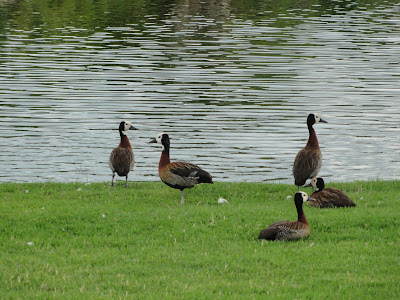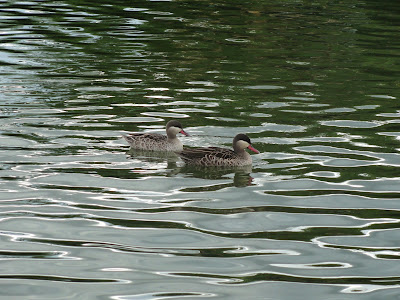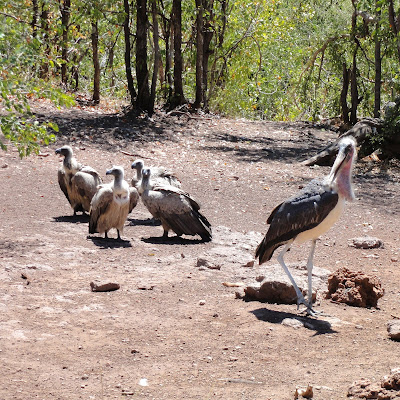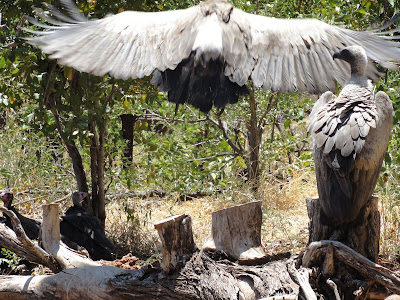142. Grey crowned crane
Also known as golden-crowned crane or golden-crested crane. It is approximately 1m tall and has a wingspan of 2m. Found in almost all Africa.
143. Secretary bird
Impressive sub-saharan bird, with a body of an eagle and legs similar to that of a crane. It reaches up to 1.3m in height and 2m in wingspan. Can live up to 10-15 years in the wild. Great in hunting snakes, while using its long legs to avoid snake bites, and has a very strong and fast kick. It is one of the two bird species that hunt on the ground!
Secretary birds like to hunt in pairs, build their nests on thorny trees, lay two to three eggs and are thought to mate for life.
They are endangered.
144. Common ostrich (or South African ostrich)
The common ostrich, one of the two species of ostriches, is the largest and heaviest living bird.
145. Black-chested snake eagle
Easily to distinguish during flight because of the black head in combination with the barred-white underwing flight feathers.
146. African Harrier-Hawk
Easy to distinguish in the photos because of the wing and tail pattern, in combination with the bare facial skin.
April 2024, Zimbabwe







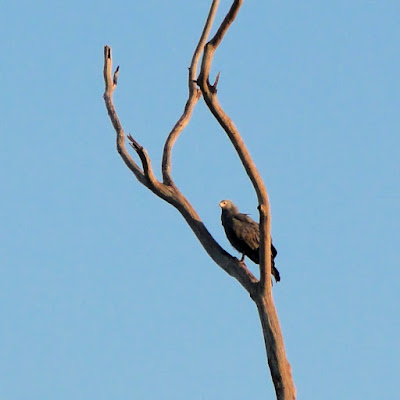









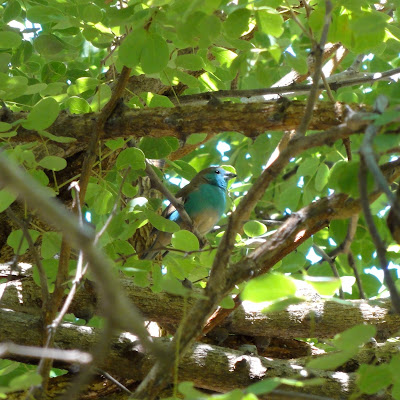



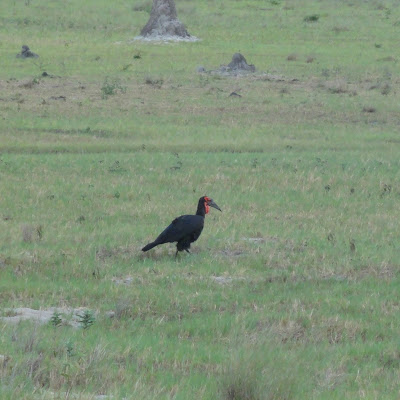








.JPG)

